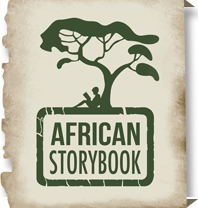



Monthly Archives: December 2016
Monthly Archives: December 2016
Being so familiar with Africa’s wildlife, when I heard that India had more wildlife species than Africa, I just had to get back there. When I finally made the trip this past October 2016, I made a conscious decision not to google or research it, content with delighting in what I saw, ‘cos that’s the feeling I get when in discovery mode. I felt curiously at home. It wasn’t the stories of corruption in local newspapers, but rather the lapwings, ibises, leopards, hogs, crocodiles and antelope, species common to my southern African home in physical surroundings that were occasionally very familiar. The reason ? The Indian subcontinent was apparently not geographically connected with the rest of Asia until about 40 million years ago. Before then it was part of the super continent of Gondwanaland, but more of that next week. While taking a break from our tiger-search in Panna Tiger Reserve, having a snack overlooking a gorge-plus-waterfall with my new Hungarian photographer-buddy Gabor, we came across a pair of long-billed vultures building their nest on the cliffs below us. The one was collecting branches from a forested area below us to the left. Each time it returned to its ‘construction site’, it would hug the cliffs, disappearing under overhangs, almost as if giving us the vulturine finger. This made focusing with a 500mm handheld a touch challenging.
Recent Posts
Archives
- November 2017
- October 2017
- September 2017
- July 2017
- June 2017
- May 2017
- April 2017
- March 2017
- February 2017
- January 2017
- December 2016
- November 2016
- October 2016
- September 2016
- August 2016
- July 2016
- June 2016
- May 2016
- April 2016
- February 2016
- October 2015
- June 2015
- April 2015
- March 2015
- November 2014
- September 2014
- June 2014
- March 2014
- December 2013
- August 2013
- June 2013
- May 2013
- April 2013
- March 2013
- January 2013
- December 2012
- November 2012
About Angus Begg
Angus is a Private Guide / CNN award-winning Journalist taking Tourists through Cape Town, South, East and Southern Africa.
Angus is serious about his craft. With considerable experience in the various media – TV, print, radio, photography and the internet – Angus has covered every aspect of travel, whether rural communities clashing with wildlife, tracking the Serengeti migration, hiking Table Mountain or searching for that perfect sauvignon blanc.
Discover African Storybook
Follow us on Social Media
Instagram: @african_storybook
Twitter: @angusbegg
Recent Posts
-
Your Weekly African Picture Story – week 40
When I met Cobra, at a magnificently desolate safari...
-
Your Weekly African Picture Story – week 39
Cape Town is booming in popularity as a world destination....

